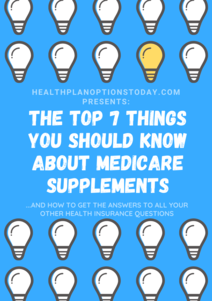We help settle the age old question here.
“Is this what the price of health insurance is supposed to be?” That’s usually what’s wandered out loud after people get a health insurance quote or while they’re searching for the best price for health insurance.
The truth is, the answer to that question is quite complex and depends on several factors that have a direct impact on how high or low your premiums will be.
This answer to this question even varies state-to-state. People across the country pay massively different health insurance premiums every month. Fortunately, thanks to the Affordable Care Act, your pre-existing health condition or gender will not determine the amount of premium you pay. Nevertheless, it is important to know what factors the insurance companies look for, and to understand how these factors can affect the cost of your health insurance.
Some of the factors are beyond your immediate control, and these include your age, the federal and state laws that apply to you, what county you reside in, and whether you live in an urban or rural area.
Other factors that affect the cost include:
- Whether you are in an employer’s group plan
- The size of the company you work for
- Your income
- The type of health insurance plan you choose
- Whether or not you use tobacco products
Therefore, the “best” price for health insurance for a person or family depends on these factors.
According to an Employer Health Benefits Survey conducted in 2019, individual coverage for employee-sponsored Americans costs an average of $7,188 each year, and family coverage averages $20,576 for per year. Don’t forget, though, that these costs are typically at least partially covered by employers. In addition, generally speaking, people who buy health insurance through the national and state marketplaces end up paying more than employees who pay health insurance premiums using pretax income.
Choosing the Right Health Insurance Policy
There are health insurance plans for single individuals, married couples, people with kids, seniors, minors, and people in unique situations. The policy you qualify for will affect the quality of healthcare you receive, the amount you will pay, and the benefits you will have access to. Therefore, you need to review and analyze all options to make an informed decision that will meet your specific needs.
When it comes to the cost of health insurance, it’s important to understand the difference between POS, PPO, and HMO plans, in addition to indemnity plans.
Types Of Insurance Plans – Decode The Acronyms:
- Point of Service Plans (POS)
- Preferred Provider Organizations, also known as PPOs
- Health Maintenance Organizations, or HMOs
- Indemnity or Fee-for-Service Plans.
Each of these plans comes with its own pros and cons and pricing structure. That’s why it’s important to conduct adequate research before selecting a plan (see our article that compares HMOs vs PPOs).
How Do Subsidies Affect The Cost of Health Insurance?
A health insurance subsidy is where the government helps credit health insurance premiums, making them more affordable to applicants. In essence, the government makes payments to insurance companies directly or may reduce the amount of tax an insured person may have to pay; this helps cover a portion of the price that subscribers need to pay. This year, the government increased the subsidies to Americans with low income and extended the bracket to those with slightly higher incomes.
Health Insurance Deductibles
In addition to the premiums that health insurance subscribers pay, they also pay deductibles up until a certain point. At the predetermined point, insurance coverage starts to pay a portion of the bills, which is obviously an advantage for the insured.
Finding the Best Price for Health Insurance
Our team of experts at HealthPlanOptionsToday are trained and experienced in helping people get the best insurance prices for their unique needs and situation. They specialize in exploring every available option, and have helped thousands of Americans get the best health insurance plans for their families and themselves. We can’t wait to help you as well! Click the button below and we’ll get in touch with you, or call our hotline at 855-218-3447 for instant help.
 Call Our Insurance Hotline:
Call Our Insurance Hotline:













